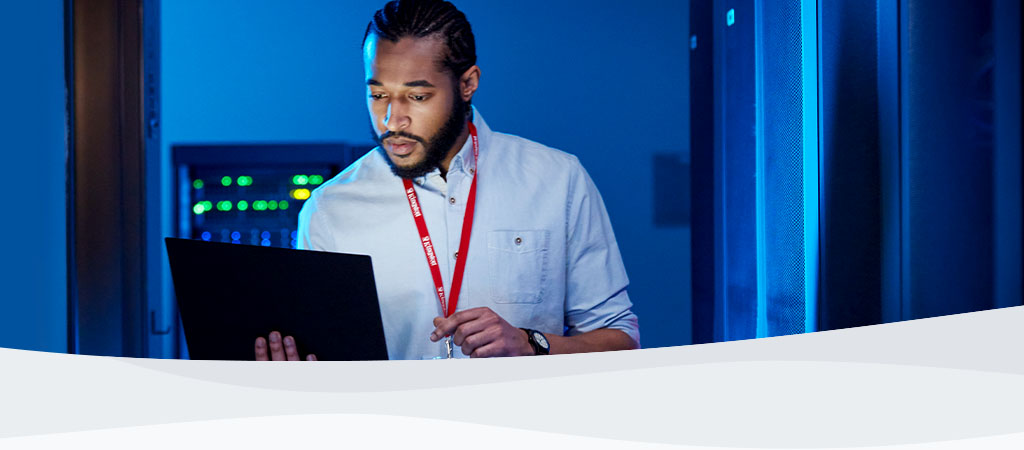
SAVAGE EXO SSD - サポート
リソース
よく寄せられる質問
内蔵型SSDや外付けUSBなどのフラッシュストレージではよくあることで、フラッシュメモリのメーカーと、回転するプラッタ製ハードドライブメーカーのメガバイトの計算方法が異なるため、このようなことが起こります。ハードドライブメーカーはメガバイト(または1,000x1,000バイト)を1,000KBととして計算するのに対し、フラッシュベースのストレージでは二進法を用い1,024KBとして計算します。
例:フラッシュベースのストレージデバイスが1TBの場合、Windowsでは931.32GBの容量として計算されます。(1,000,000,000,000÷1,024÷1,024÷1,024=931.32GB).
さらに、Kingstonではフォーマットやファームウェアおよび/または操作に関する情報などの機能のために、製品に表記された容量の一部を予約として使用しています。このことから、製品に表記された容量の一部はデータストレージとして使用できません。
FAQ: KDT-010611-GEN-06
上記の内容はお役に立ちましたか?
これが不可能な場合、または以前のデータを新しいドライブにクローンした場合は、システム BIOS で新しいドライブが起動デバイスとして表示されることを確認し、起動用に選択します。
FAQ: KSD-012010-001-03
上記の内容はお役に立ちましたか?
FAQ: KSD-012010-001-18
上記の内容はお役に立ちましたか?
BIOS にドライブが存在する場合は、オペレーティングシステム内でディスクを初期化する必要がある場合があります。
Windows の場合:
ステップ 1:ドライブが正しく接続されていることを確認し、システムの電源を入れ、Windows OS を起動します。
ステップ 2:Windows + X を押し、ディスクの管理を選択します。
ステップ 3:SSD が新しく初期化されていない場合、「ディスクを初期化してください」というポップアップが表示されます。
ステップ 4:次のいずれかを選択します。
MBR(マスターブートレコード):2TB 未満のドライブや古いシステムに適しています。
GPT (GUID パーティションテーブル):最新のシステムや 2TB 以上のドライブにおすすめです。
ステップ 5:「OK」をクリックしてディスクを初期化します。
ステップ 6:初期化されると、SSD が「未割り当て」と表示されます。その上で右クリックし、「新しいシンプルボリューム」を選択します。
ステップ 7:画面の指示に従って SSD をフォーマットし、ドライブ文字を割り当てます。
Mac OS の場合:
ステップ 1:ドライブが正しく接続されていることを確認し、システムの電源を入れ、Mac OS を起動します。
ステップ 2:ディスクユーティリティを開きます (Spotlight で Cmd + Space と入力し、「ディスクユーティリティ」と入力すると見つかります)。
ステップ 3:左側のペインで SSD を選択します。
ステップ 4:「消去」をクリックします。
ステップ 5:ドライブの名前を入力し、「フォーマット」で以下を選択します。
新しい Mac および SSD の場合は、APFS。
古いシステムや HDD の場合は、Mac OS Extended(ジャーナル付き)。
ステップ 6:「消去」をクリックします。プロセスが完了すると、SSD が使用可能になります。
Linux の場合:
ステップ 1:ドライブが正しく接続されていることを確認し、システムの電源を入れ、Linux OS を起動します。
ステップ 2:ターミナルを開きます。
ステップ 3:sudo fdisk -l と入力し、接続されているすべてのドライブをリストアップします。SSD のサイズを確認し、デバイス名 (例:/dev/sdb) をメモします。
ステップ 4:fdisk または parted を使って SSD を初期化します。以下は fdisk を使った基本的なガイドです。
sudo fdisk /dev/sdb (/dev/sdb を SSD のデバイス名に置き換えてください) と入力します。
g を押して新しい GPT パーティションテーブルを作成します。
n を押して新しいパーティションを作成します。プロンプトに従ってサイズとタイプを指定します。
w を押して変更を書き込みます。
ステップ 5:SSD 上の新しいパーティションをフォーマットします (例:/dev/sdb1)。お好みのファイルシステムでフォーマットできます。
ext4 の場合:sudo mkfs.ext4 /dev/sdb1
ext3 の場合:sudo mkfs.ext3 /dev/sdb1
FAT32 の場合:sudo mkfs.vfat /dev/sdb1
ステップ 6:SSD をマウントします。
マウントポイントを作成します:sudo mkdir /mnt/myssd
SSD をマウントします:sudo mount /dev/sdb1 /mnt/myssd
忘れずに、dev/sdb1 を SSD のパーティション名に置き換えてください。
FAQ: KSD-012010-001-15
上記の内容はお役に立ちましたか?
SSD ファームウェアは、ホストシステムとの通信、データの保存と取り出し、ウェアレベリング、エラー訂正などの動作を管理する SSD 内の統合ソフトウェアです。
SSD に新バージョンのファームウェアが必要な場合は、Kingston の SSD Manager ソフトウェアを実行すると通知が表示されます。
FAQ: KSD-012010-001-11
上記の内容はお役に立ちましたか?
https://www.kingston.com/blog/pc-performance/nvme-vs-sata
FAQ: KSD-012010-001-19
上記の内容はお役に立ちましたか?
ソースドライブより大きい新しいドライブにクローンを作成する場合、ソフトウェアがパーティションサイズを適切に調整しないことがあります。この場合、未使用領域が残ってしまう可能性があります。これを回避するには、クローン作製手順を参照してください。
FAQ: KSD-012010-001-04
上記の内容はお役に立ちましたか?
SSD ファームウェアは、ホストシステムとの通信、データの保存と取り出し、ウェアレベリング、エラー訂正などの動作を管理する SSD 内の統合ソフトウェアです。
SSD に新バージョンのファームウェアが必要な場合は、Kingston の SSD Manager ソフトウェアを実行すると通知が表示されます。
FAQ: KSD-012010-001-11
上記の内容はお役に立ちましたか?
FAQ: KSD-012010-001-12
上記の内容はお役に立ちましたか?
FAQ: KSD-012010-001-13
上記の内容はお役に立ちましたか?
FAQ: KSD-012010-001-14
上記の内容はお役に立ちましたか?
ソースドライブより大きい新しいドライブにクローンを作成する場合、ソフトウェアがパーティションサイズを適切に調整しないことがあります。この場合、未使用領域が残ってしまう可能性があります。これを回避するには、クローン作製手順を参照してください。
FAQ: KSD-012010-001-04
上記の内容はお役に立ちましたか?
BIOS にドライブが存在する場合は、オペレーティングシステム内でディスクを初期化する必要がある場合があります。
Windows の場合:
ステップ 1:ドライブが正しく接続されていることを確認し、システムの電源を入れ、Windows OS を起動します。
ステップ 2:Windows + X を押し、ディスクの管理を選択します。
ステップ 3:SSD が新しく初期化されていない場合、「ディスクを初期化してください」というポップアップが表示されます。
ステップ 4:次のいずれかを選択します。
MBR(マスターブートレコード):2TB 未満のドライブや古いシステムに適しています。
GPT (GUID パーティションテーブル):最新のシステムや 2TB 以上のドライブにおすすめです。
ステップ 5:「OK」をクリックしてディスクを初期化します。
ステップ 6:初期化されると、SSD が「未割り当て」と表示されます。その上で右クリックし、「新しいシンプルボリューム」を選択します。
ステップ 7:画面の指示に従って SSD をフォーマットし、ドライブ文字を割り当てます。
Mac OS の場合:
ステップ 1:ドライブが正しく接続されていることを確認し、システムの電源を入れ、Mac OS を起動します。
ステップ 2:ディスクユーティリティを開きます (Spotlight で Cmd + Space と入力し、「ディスクユーティリティ」と入力すると見つかります)。
ステップ 3:左側のペインで SSD を選択します。
ステップ 4:「消去」をクリックします。
ステップ 5:ドライブの名前を入力し、「フォーマット」で以下を選択します。
新しい Mac および SSD の場合は、APFS。
古いシステムや HDD の場合は、Mac OS Extended(ジャーナル付き)。
ステップ 6:「消去」をクリックします。プロセスが完了すると、SSD が使用可能になります。
Linux の場合:
ステップ 1:ドライブが正しく接続されていることを確認し、システムの電源を入れ、Linux OS を起動します。
ステップ 2:ターミナルを開きます。
ステップ 3:sudo fdisk -l と入力し、接続されているすべてのドライブをリストアップします。SSD のサイズを確認し、デバイス名 (例:/dev/sdb) をメモします。
ステップ 4:fdisk または parted を使って SSD を初期化します。以下は fdisk を使った基本的なガイドです。
sudo fdisk /dev/sdb (/dev/sdb を SSD のデバイス名に置き換えてください) と入力します。
g を押して新しい GPT パーティションテーブルを作成します。
n を押して新しいパーティションを作成します。プロンプトに従ってサイズとタイプを指定します。
w を押して変更を書き込みます。
ステップ 5:SSD 上の新しいパーティションをフォーマットします (例:/dev/sdb1)。お好みのファイルシステムでフォーマットできます。
ext4 の場合:sudo mkfs.ext4 /dev/sdb1
ext3 の場合:sudo mkfs.ext3 /dev/sdb1
FAT32 の場合:sudo mkfs.vfat /dev/sdb1
ステップ 6:SSD をマウントします。
マウントポイントを作成します:sudo mkdir /mnt/myssd
SSD をマウントします:sudo mount /dev/sdb1 /mnt/myssd
忘れずに、dev/sdb1 を SSD のパーティション名に置き換えてください。
FAQ: KSD-012010-001-15
上記の内容はお役に立ちましたか?
FAQ: KSD-012010-001-18
上記の内容はお役に立ちましたか?
ソースドライブより大きい新しいドライブにクローンを作成する場合、ソフトウェアがパーティションサイズを適切に調整しないことがあります。この場合、未使用領域が残ってしまう可能性があります。これを回避するには、クローン作製手順を参照してください。
FAQ: KSD-012010-001-04
上記の内容はお役に立ちましたか?
これが不可能な場合、または以前のデータを新しいドライブにクローンした場合は、システム BIOS で新しいドライブが起動デバイスとして表示されることを確認し、起動用に選択します。
FAQ: KSD-012010-001-03
上記の内容はお役に立ちましたか?
FAQ: KSD-012010-001-14
上記の内容はお役に立ちましたか?
FAQ: KSD-012010-001-13
上記の内容はお役に立ちましたか?
FAQ: KSD-012010-001-12
上記の内容はお役に立ちましたか?
SSD ファームウェアは、ホストシステムとの通信、データの保存と取り出し、ウェアレベリング、エラー訂正などの動作を管理する SSD 内の統合ソフトウェアです。
SSD に新バージョンのファームウェアが必要な場合は、Kingston の SSD Manager ソフトウェアを実行すると通知が表示されます。
FAQ: KSD-012010-001-11
上記の内容はお役に立ちましたか?
FAQ: KSD-012010-001-18
上記の内容はお役に立ちましたか?
BIOS にドライブが存在する場合は、オペレーティングシステム内でディスクを初期化する必要がある場合があります。
Windows の場合:
ステップ 1:ドライブが正しく接続されていることを確認し、システムの電源を入れ、Windows OS を起動します。
ステップ 2:Windows + X を押し、ディスクの管理を選択します。
ステップ 3:SSD が新しく初期化されていない場合、「ディスクを初期化してください」というポップアップが表示されます。
ステップ 4:次のいずれかを選択します。
MBR(マスターブートレコード):2TB 未満のドライブや古いシステムに適しています。
GPT (GUID パーティションテーブル):最新のシステムや 2TB 以上のドライブにおすすめです。
ステップ 5:「OK」をクリックしてディスクを初期化します。
ステップ 6:初期化されると、SSD が「未割り当て」と表示されます。その上で右クリックし、「新しいシンプルボリューム」を選択します。
ステップ 7:画面の指示に従って SSD をフォーマットし、ドライブ文字を割り当てます。
Mac OS の場合:
ステップ 1:ドライブが正しく接続されていることを確認し、システムの電源を入れ、Mac OS を起動します。
ステップ 2:ディスクユーティリティを開きます (Spotlight で Cmd + Space と入力し、「ディスクユーティリティ」と入力すると見つかります)。
ステップ 3:左側のペインで SSD を選択します。
ステップ 4:「消去」をクリックします。
ステップ 5:ドライブの名前を入力し、「フォーマット」で以下を選択します。
新しい Mac および SSD の場合は、APFS。
古いシステムや HDD の場合は、Mac OS Extended(ジャーナル付き)。
ステップ 6:「消去」をクリックします。プロセスが完了すると、SSD が使用可能になります。
Linux の場合:
ステップ 1:ドライブが正しく接続されていることを確認し、システムの電源を入れ、Linux OS を起動します。
ステップ 2:ターミナルを開きます。
ステップ 3:sudo fdisk -l と入力し、接続されているすべてのドライブをリストアップします。SSD のサイズを確認し、デバイス名 (例:/dev/sdb) をメモします。
ステップ 4:fdisk または parted を使って SSD を初期化します。以下は fdisk を使った基本的なガイドです。
sudo fdisk /dev/sdb (/dev/sdb を SSD のデバイス名に置き換えてください) と入力します。
g を押して新しい GPT パーティションテーブルを作成します。
n を押して新しいパーティションを作成します。プロンプトに従ってサイズとタイプを指定します。
w を押して変更を書き込みます。
ステップ 5:SSD 上の新しいパーティションをフォーマットします (例:/dev/sdb1)。お好みのファイルシステムでフォーマットできます。
ext4 の場合:sudo mkfs.ext4 /dev/sdb1
ext3 の場合:sudo mkfs.ext3 /dev/sdb1
FAT32 の場合:sudo mkfs.vfat /dev/sdb1
ステップ 6:SSD をマウントします。
マウントポイントを作成します:sudo mkdir /mnt/myssd
SSD をマウントします:sudo mount /dev/sdb1 /mnt/myssd
忘れずに、dev/sdb1 を SSD のパーティション名に置き換えてください。
FAQ: KSD-012010-001-15
上記の内容はお役に立ちましたか?